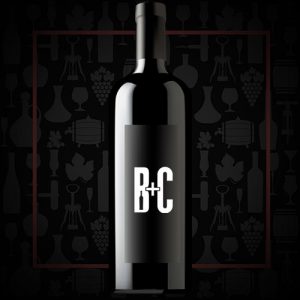Cellar Profile
Owned and operated by Ruth and Charles Simpson, this English wine estate was established in 2012 and officially opened its doors in 2016. Ruth and Charles have a long and successful history in the wine industry. For 17 years, their Languedoc estate, Domaine Sainte Rose, has crafted award-winning wines from that region’s warm, sunny climes. Their British roots brought them back to the southern slopes of England to fulfill the enormous potential of the region for making elegant, cool-climate wines, both still and sparkling. Their two vineyards are located in a designated Area of Outstanding Natural Beauty, overlooking the gently-undulating English countryside. This one of the sunniest corners of Great Britain. The region’s lime-rich, chalky soils and moderate climate are similar to that of Champagne and Burgundy, making grape selection an easy choice; Chardonnay, Pinot Noir and Pinot Meunier dominate plantings. The long, cool ripening period here means that the best wines exhibit pure varietal flavours along with elegant acidity and a complex character. These vineyards are planted almost exclusively on south-facing slopes, ensuring that grapes reach full phenolic and sugar ripeness each year and are protected from the area’s fierce winds and spring frost.
Region
Elham Valley is an unspoilt seam in the North Downs of the county of Kent, where the contours of the land, the climate and the soil could scarcely be improved upon for viticulture. The intensely lime-rich chalk soil forms part of the same chalk ridge that stretches from southern England to the French Champagne region and on to Burgundy. The English climate may be marginal for viticulture but its relative austerity— when expertly handled—and long, cool ripening period is ideally suited to creating still and sparkling wines with pure variety flavours, elegant acidity and subtly sophisticated aromas.
Vineyard
Simpsons Wine Estate is located in one of the sunniest corners of the British Isles. Proprietors Charles and Ruth have further safeguarded their vines against extremes in climate by selecting sloping vineyards that face almost due south, ensuring heat accumulation in the day and excellent cold air drainage at night. The maritime influence is also crucial to the success of these vines. The property is less than eight miles from the coast on three sides, which helps insulate the fruit against intense variations in temperature. The chalk soils here are the same ones you find in the Champagne region of France. They provide exceptional drainage, which is key in a place like England where rains can be quite heavy during the growing season.
Varieties
Pinot Noir—chiefly associated with the Burgundy region of France— is grown around the world, mostly in cooler climates. The grape’s tendency to produce tightly-packed clusters makes it susceptible to several viticultural hazards involving rot that require diligent canopy management. When young, wines made from Pinot Noir tend to have red fruit aromas of cherries, raspberries and strawberries. As the wine ages, Pinot has the potential to develop more vegetal and earthy aromas that can contribute to the complexity of the wine. Thin skins and low levels of phenolic compounds lend Pinot to producing mostly lightly-coloured, medium-bodied and low-tannin wines that can often go through phases of uneven and unpredictable aging. One of the primary grapes used in Champagne, it is prized for its ability to craft world class sparkling wines.
Winemaking
Hand-harvested fruit from the Roman Road vineyard is whole-cluster pressed in order to derive the most varietal character from the grapes. The juice is fermented in temperature-controlled stainless steel before it is bottled and a secondary fermentation is induced. Sealed with a crown cap, the wine then spends 15 months on its lees, in darkness, with hand riddling, before degorgement. The wine spends a further four months of aging before release.
Tasting Notes
Pale pink, with ruby hues, this charming sparkler has the typical biscuit and yeast aromas you get in quality Traditional Method bubblies, but there is plenty of primary red fruit as well. Elements of sour cherry, raspberry and currant mingle with fresh baked bread and earth. There is a solid amount of fresh acidity, but it has a creamy, lush mousse and isn’t lean or austere in any way. Chill well and serve as an aperitif or with strawberries and dark chocolate.

 info@buyersandcellars.ca
www.buyersandcellars.ca
info@buyersandcellars.ca
www.buyersandcellars.ca